Traditionalist Issues
 |
 |
 |
 |
 |
 |
 |
Dialogue Mass - CXIV
Giving the Laity the Illusion of Power
The evidence we have so far reviewed shows that the suppression of the Minor Orders in 1972 stemmed from the revolutionary desire to subvert the Constitution of the Church, changing it from a two-tier monarchical structure of rulers and ruled to a less rigid arrangement, one in which the laity would be given at least the illusion of power in every aspect of ecclesiastical life.
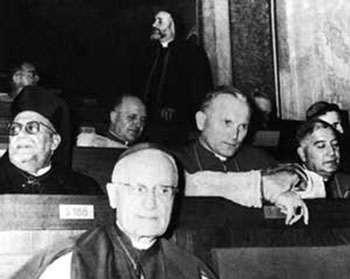 It is now clear that this revolution was planned during the sessions of Vatican II where certain Bishops, motivated both by ideology and a clericalist desire for control, played a crucial part in sabotaging the Council. They achieved their aim by first planting progressivist ideas in the Council documents. Then, having risen to prominent positions in the Church, they used their influence to direct the faithful along the preset path of reform.
It is now clear that this revolution was planned during the sessions of Vatican II where certain Bishops, motivated both by ideology and a clericalist desire for control, played a crucial part in sabotaging the Council. They achieved their aim by first planting progressivist ideas in the Council documents. Then, having risen to prominent positions in the Church, they used their influence to direct the faithful along the preset path of reform.
One egregious example was Bishop Karol Wojtyla – the future Pope John Paul II – who was one of several Bishops involved in drawing up the draft of the Constitution of the Church, Lumen gentium.
It is important to know that the purpose of their efforts was to produce a new text on the Church as a substitute for the original schema on the Constitution of the Church De Ecclesia, which had been drafted by traditionalist Bishops under the presidency of Card. Ottaviani, head of the Theological Commission.
An early 'woke warrior'
Bishop Wojtyla’s interventions in the discussions, recorded in the Acta Synodalia, show that he found the schema unacceptable because it treated the subject of holiness in the Church almost exclusively with reference to the clergy and religious, with hardly a word about the ordinary faithful. (1) In other words, it contained, in his view, implicit bias against the laity.
But this criticism was itself unfair because he did not promote due respect for the priesthood and the religious life as a higher calling to holiness. Instead, he attacked the straw man of "disrespect" for the laity, which he believed was expressed in the fact that some people – the clergy and religious – are singled out for a higher state of holiness than others.
The only route, in his opinion, to redressing the balance was to insist that the three Evangelical Counsels of perfection, which are the subject of religious vows in the consecrated life, should not be exclusive to them, but should also be exercised by the laity in their daily lives. This is what he called “the universal call to holiness” (vocatio universalis ad sanctitatem). He stated:
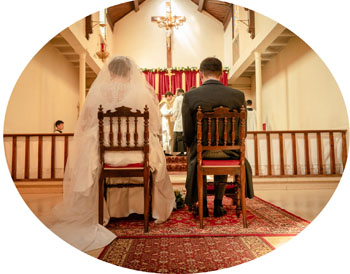 “However, on the other hand, it is also important that the call to holiness should not be limited; that everyone should know that it is offered to them and is truly possible for them. Therefore, the Council must urge everyone, not only those who have the care of souls but also lay people, to seek ways and methods of holiness also in the world and make them visible to others, so that beside monastic asceticism a worldly asceticism (ascesis mundana), so to speak, might evolve.” (2)
“However, on the other hand, it is also important that the call to holiness should not be limited; that everyone should know that it is offered to them and is truly possible for them. Therefore, the Council must urge everyone, not only those who have the care of souls but also lay people, to seek ways and methods of holiness also in the world and make them visible to others, so that beside monastic asceticism a worldly asceticism (ascesis mundana), so to speak, might evolve.” (2)
This passage contained a subtle accusation that the pre-Vatican II Church had limited the acquisition of holiness to those in the clerical or religious life and had neglected that of the laity. Not only was this assertion demonstrably untrue and a distortion of reality – for the Church has never ceased to provide the means of holiness through the ministry of the clergy for all the laity – but it also had the potential to generate conflict and rivalry between the clergy and the laity.
Those who continue to make this accusation ignore the fact that the Church had always maintained a distinction between the Precepts of the Gospel which are binding on all Christians, and the Evangelical Counsels of perfection which are the vocation of comparatively few. This distinction, incidentally, was also denied by heretics in every epoch, but particularly by Protestants in the 16th century.
An intentional break with the past
This was most evident in Wojtyla’s desire to place what had always been recognized as the higher state of holiness of the clerical, monastic or religious life on a par with the ordinary means of sanctification available to lay people living in the world.
The remedy he proposed – that everyone, not just consecrated persons, must follow the Evangelical Counsels – was problematic for several reasons.
First, the Counsels were not commands of universal obligation, and were not incumbent on the laity living in society. By contrast, they were practiced by those who had left the world behind in order to devote their lives wholly to God. As such, they were understood as a more effective pursuit of holiness because they furnished the means for those who had freely taken public vows in a religious profession to attain a higher state of sanctity through a more intense living of the Gospel.
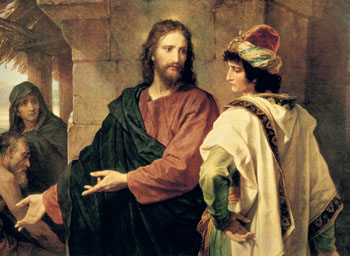 This is in line with Our Lord’s words to the rich young man. (Matt. 19: 16-21) (3) It follows that the religious life, whether of priests, monks or nuns, is objectively more holy than the common Christian life.
This is in line with Our Lord’s words to the rich young man. (Matt. 19: 16-21) (3) It follows that the religious life, whether of priests, monks or nuns, is objectively more holy than the common Christian life.
Second, using the Counsels as the baseline for universal holiness is neither realistic nor honest. The Church has never adopted this approach, nor have the Gospels required it. Its effect was to diminish the value of the religious vocation as a unique witness to transcendent realities that lie beyond this world by placing it on the same level as this-worldly tasks.
Such is the confusion engendered by the “universal call to holiness” that the very word “vocation,” which used to be applied in the strict sense to the consecrated life, is now used by Church leaders to encompass the married state. As a result, “praying for vocations” includes Matrimony on a level of equality with the higher state of Priestly Celibacy and Consecrated Virginity.
Third, the expression ascesis mundana (worldly asceticism) is confusing, to say the least, for the Evangelical Counsels were meant to free the soul from worldly concerns. The very word mundana betrays its incongruity with traditional Catholic teaching on holiness because, in the language of the Church, mundus (the world) was almost always opposed to caelum (heaven) as one of the enemies of the soul.
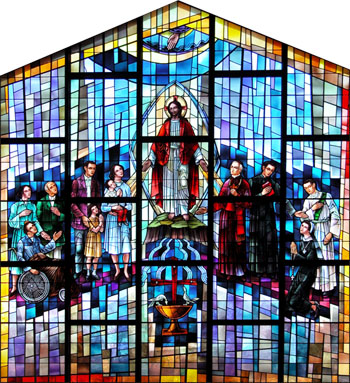 The expression is a complete novelty because the world – the realm of sin and death – could in no way advance Christ’s Kingdom of holiness and life. It has never been part of the Catholic vision of holiness, which is entirely supernatural and involves doing penance for one’s sins out of love of God and sorrow for having offended His goodness. Therefore, it is different in essence from any asceticism performed on a purely natural or “worldly” level.
The expression is a complete novelty because the world – the realm of sin and death – could in no way advance Christ’s Kingdom of holiness and life. It has never been part of the Catholic vision of holiness, which is entirely supernatural and involves doing penance for one’s sins out of love of God and sorrow for having offended His goodness. Therefore, it is different in essence from any asceticism performed on a purely natural or “worldly” level.
This self-contradictory phrase must be seen in the light of the Nouvelle Théologie adopted by Vatican II which, under the influence of theologians like Rahner, de Lubac and Schillebeeckx, collapsed the spiritual dualism between the supernatural and the natural, the divine and the merely human, the Church and the World, making the distinction between the two categories difficult to discern.
Before Vatican II, it was clearly understood that men and women entered religious life for a supernatural end – explicitly the salvation of their souls – even if some performed services in teaching, nursing etc. in the outside world. But the Nouvelle Théologie made the goal of the Church in general and the religious life in particular the service of man rather than primarily the service of God. This led to the modern forgetfulness that God is served first.
Terminal decline in religious orders
By definition, such radical theorizing, which reverses the Church’s teaching, was bound to undermine Tradition, and would inevitably have a destructive effect on vocations to the priesthood and religious life.
For the traditional distinction between the Church and the World was the core element of the Religious Congregations and a significant factor in attracting and sustaining vocations. It provided fertile ground for vocations from among the faithful who sought to achieve a higher degree of holiness precisely by shunning the world and its ways. This was exactly what was stated in the original schema De Ecclesia, which was rejected by progressivist Bishops at the Council. (4)
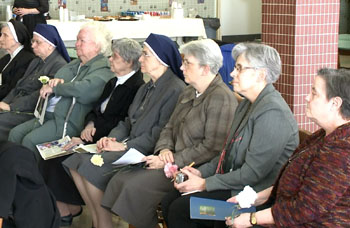 The novel teaching inserted into Lumen gentium by Bishop Wojtyla that all people are called to exactly the same holiness (ad ipsam sanctitatem vocantur), (5) whether in the presbytery, the cloister or the outside world, effectively removed the main incentive to enter the priesthood or religious life.
The novel teaching inserted into Lumen gentium by Bishop Wojtyla that all people are called to exactly the same holiness (ad ipsam sanctitatem vocantur), (5) whether in the presbytery, the cloister or the outside world, effectively removed the main incentive to enter the priesthood or religious life.
The result of creating this chimerical Church-World composite enshrined in the slogan “equality of holiness for all” was to induce a terminal decline in religious vocations. No wonder that so many seminaries, convents and monasteries today have failed to attract new vocations and are dying.
It is all part of a process of desacralization, indoctrinating priests and religious to see their main goal in this life as secular and humanitarian, transforming them into social workers who help the laity to improve conditions of life in this world, rather than preparing them for the next.
Continued


Wojtyla at the Council
One egregious example was Bishop Karol Wojtyla – the future Pope John Paul II – who was one of several Bishops involved in drawing up the draft of the Constitution of the Church, Lumen gentium.
It is important to know that the purpose of their efforts was to produce a new text on the Church as a substitute for the original schema on the Constitution of the Church De Ecclesia, which had been drafted by traditionalist Bishops under the presidency of Card. Ottaviani, head of the Theological Commission.
An early 'woke warrior'
Bishop Wojtyla’s interventions in the discussions, recorded in the Acta Synodalia, show that he found the schema unacceptable because it treated the subject of holiness in the Church almost exclusively with reference to the clergy and religious, with hardly a word about the ordinary faithful. (1) In other words, it contained, in his view, implicit bias against the laity.
But this criticism was itself unfair because he did not promote due respect for the priesthood and the religious life as a higher calling to holiness. Instead, he attacked the straw man of "disrespect" for the laity, which he believed was expressed in the fact that some people – the clergy and religious – are singled out for a higher state of holiness than others.
The only route, in his opinion, to redressing the balance was to insist that the three Evangelical Counsels of perfection, which are the subject of religious vows in the consecrated life, should not be exclusive to them, but should also be exercised by the laity in their daily lives. This is what he called “the universal call to holiness” (vocatio universalis ad sanctitatem). He stated:

Vatican II aimed to put marriage
on the same level as the priesthood
This passage contained a subtle accusation that the pre-Vatican II Church had limited the acquisition of holiness to those in the clerical or religious life and had neglected that of the laity. Not only was this assertion demonstrably untrue and a distortion of reality – for the Church has never ceased to provide the means of holiness through the ministry of the clergy for all the laity – but it also had the potential to generate conflict and rivalry between the clergy and the laity.
Those who continue to make this accusation ignore the fact that the Church had always maintained a distinction between the Precepts of the Gospel which are binding on all Christians, and the Evangelical Counsels of perfection which are the vocation of comparatively few. This distinction, incidentally, was also denied by heretics in every epoch, but particularly by Protestants in the 16th century.
An intentional break with the past
This was most evident in Wojtyla’s desire to place what had always been recognized as the higher state of holiness of the clerical, monastic or religious life on a par with the ordinary means of sanctification available to lay people living in the world.
The remedy he proposed – that everyone, not just consecrated persons, must follow the Evangelical Counsels – was problematic for several reasons.
First, the Counsels were not commands of universal obligation, and were not incumbent on the laity living in society. By contrast, they were practiced by those who had left the world behind in order to devote their lives wholly to God. As such, they were understood as a more effective pursuit of holiness because they furnished the means for those who had freely taken public vows in a religious profession to attain a higher state of sanctity through a more intense living of the Gospel.

Our Lord invited the rich young man
to reject everything in the world & follow him
Second, using the Counsels as the baseline for universal holiness is neither realistic nor honest. The Church has never adopted this approach, nor have the Gospels required it. Its effect was to diminish the value of the religious vocation as a unique witness to transcendent realities that lie beyond this world by placing it on the same level as this-worldly tasks.
Such is the confusion engendered by the “universal call to holiness” that the very word “vocation,” which used to be applied in the strict sense to the consecrated life, is now used by Church leaders to encompass the married state. As a result, “praying for vocations” includes Matrimony on a level of equality with the higher state of Priestly Celibacy and Consecrated Virginity.
Third, the expression ascesis mundana (worldly asceticism) is confusing, to say the least, for the Evangelical Counsels were meant to free the soul from worldly concerns. The very word mundana betrays its incongruity with traditional Catholic teaching on holiness because, in the language of the Church, mundus (the world) was almost always opposed to caelum (heaven) as one of the enemies of the soul.

A post-Vatican II portrayal of 'the universal call to holiness'
This self-contradictory phrase must be seen in the light of the Nouvelle Théologie adopted by Vatican II which, under the influence of theologians like Rahner, de Lubac and Schillebeeckx, collapsed the spiritual dualism between the supernatural and the natural, the divine and the merely human, the Church and the World, making the distinction between the two categories difficult to discern.
Before Vatican II, it was clearly understood that men and women entered religious life for a supernatural end – explicitly the salvation of their souls – even if some performed services in teaching, nursing etc. in the outside world. But the Nouvelle Théologie made the goal of the Church in general and the religious life in particular the service of man rather than primarily the service of God. This led to the modern forgetfulness that God is served first.
Terminal decline in religious orders
By definition, such radical theorizing, which reverses the Church’s teaching, was bound to undermine Tradition, and would inevitably have a destructive effect on vocations to the priesthood and religious life.
For the traditional distinction between the Church and the World was the core element of the Religious Congregations and a significant factor in attracting and sustaining vocations. It provided fertile ground for vocations from among the faithful who sought to achieve a higher degree of holiness precisely by shunning the world and its ways. This was exactly what was stated in the original schema De Ecclesia, which was rejected by progressivist Bishops at the Council. (4)

Aging & uninspiring religious women
gather to discuss their bleak future
The result of creating this chimerical Church-World composite enshrined in the slogan “equality of holiness for all” was to induce a terminal decline in religious vocations. No wonder that so many seminaries, convents and monasteries today have failed to attract new vocations and are dying.
It is all part of a process of desacralization, indoctrinating priests and religious to see their main goal in this life as secular and humanitarian, transforming them into social workers who help the laity to improve conditions of life in this world, rather than preparing them for the next.
Continued
- Acta Synodalia, Second Session, Part 4, p. 341.
- Ibid., p. 342.
- But in the first chapter of his Encyclical Veritatis splendor (1992), Pope John Paul II, ignoring the distinction between the Evangelical Counsels for the religious and the Precepts of the moral life for the rest of the faithful, stated: “This vocation to perfect love is not restricted to a small group of individuals. The invitation, “go, sell your possessions and give the money to the poor,” and the promise "'you will have treasure in heaven,' are meant for everyone." [Emphasis in the original]
- Chapter 5 of this schema explained that because “the evangelical counsels are necessarily linked with the imitation of Christ and effectively free the soul from secular concerns, they attract to their observance, more than anyone else, those who desire more clearly to express the life of the Savior in themselves, either by prayer or contemplation, or by apostolic work, or by the spiritual and corporal works of mercy, or by leading a common life.
- Acta Synodalia, p. 341.

Posted April 18, 2022
______________________
______________________
 Volume I |
 Volume II |
 Volume III |
 Volume IV |
 Volume V |
 Volume VI |
 Volume VII |
 Volume VIII |
 Volume IX |
 Volume X |
 Volume XI |
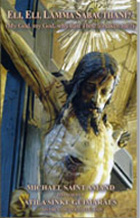 Special Edition |


